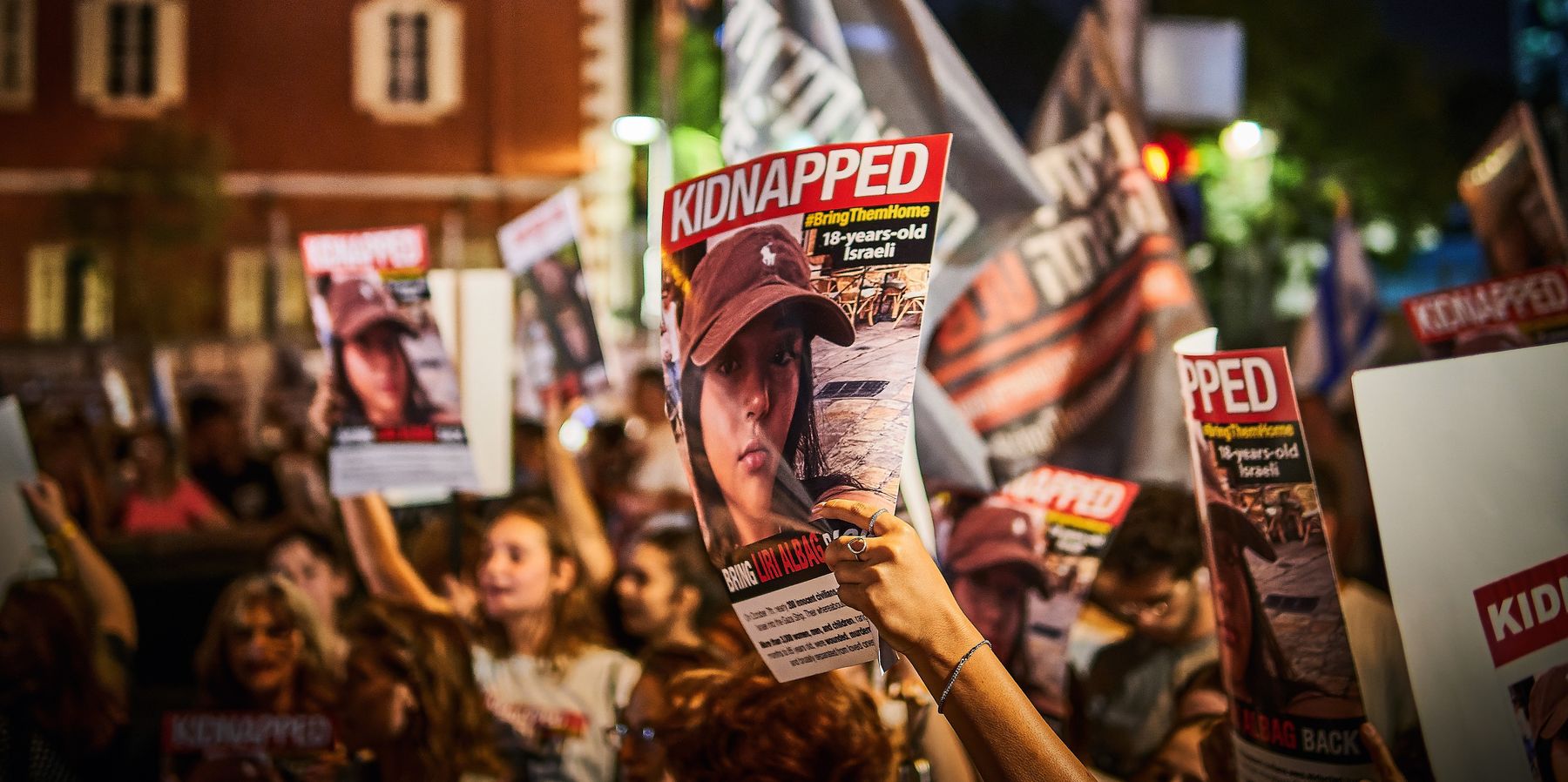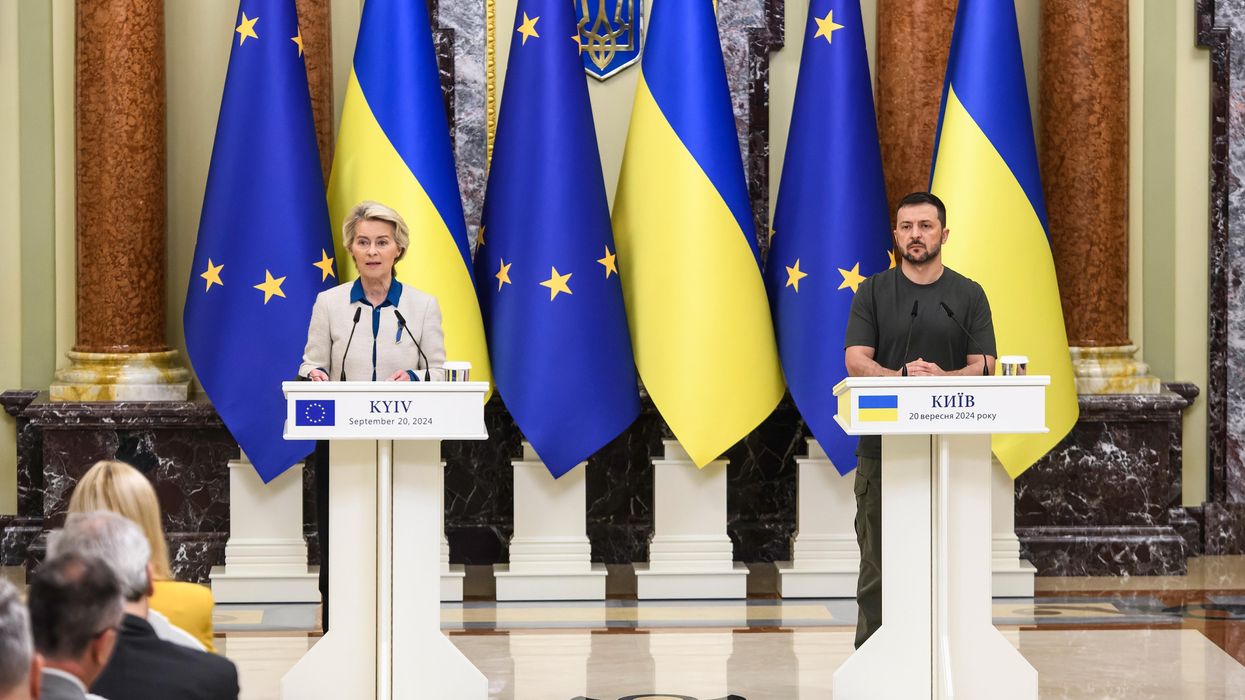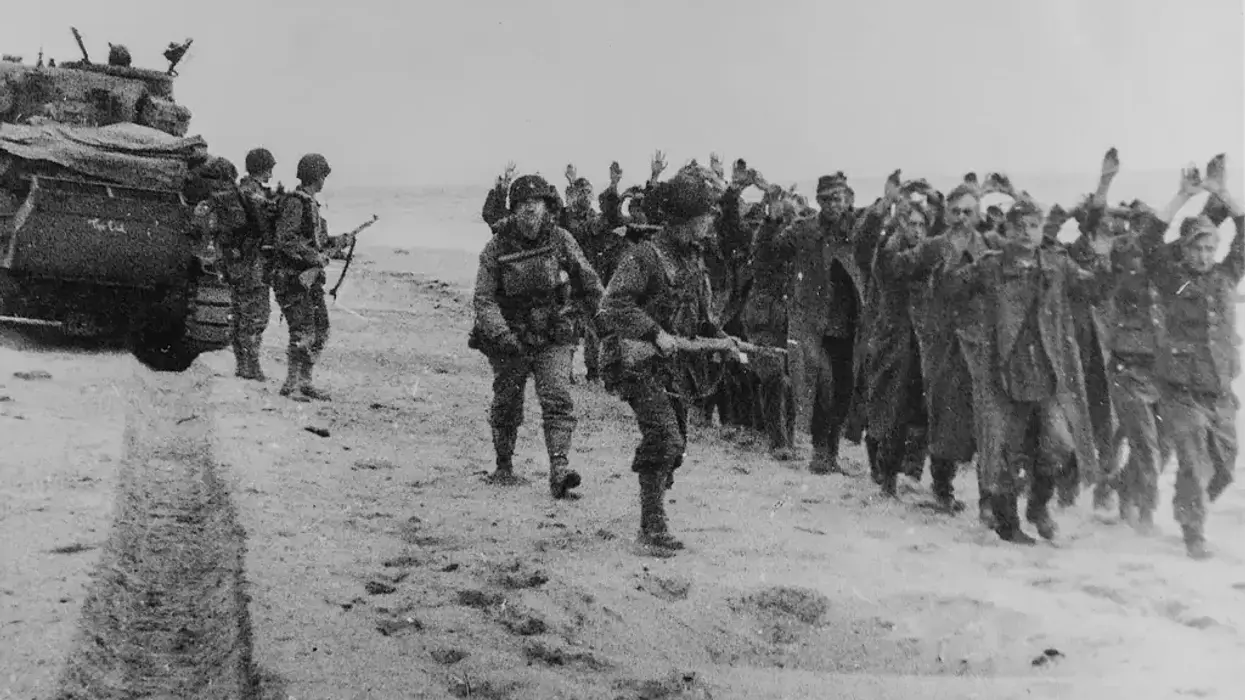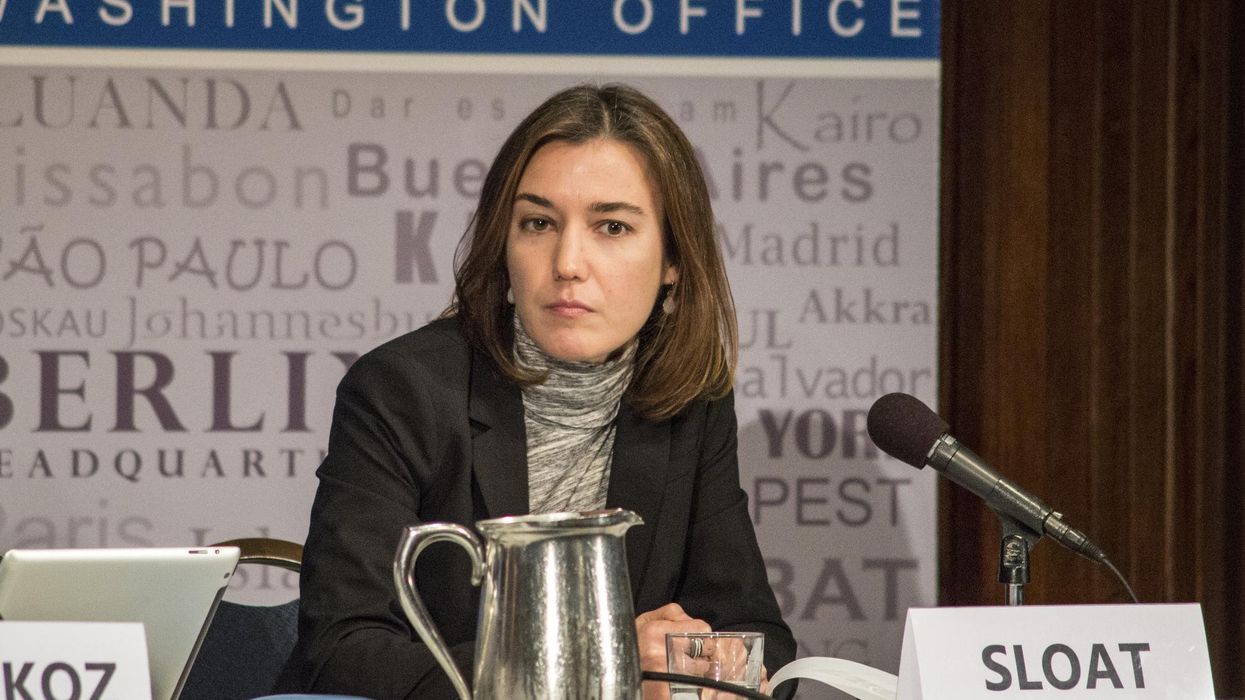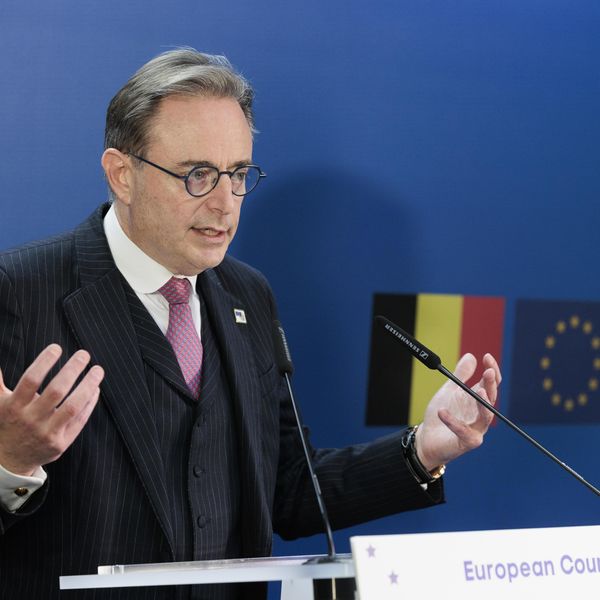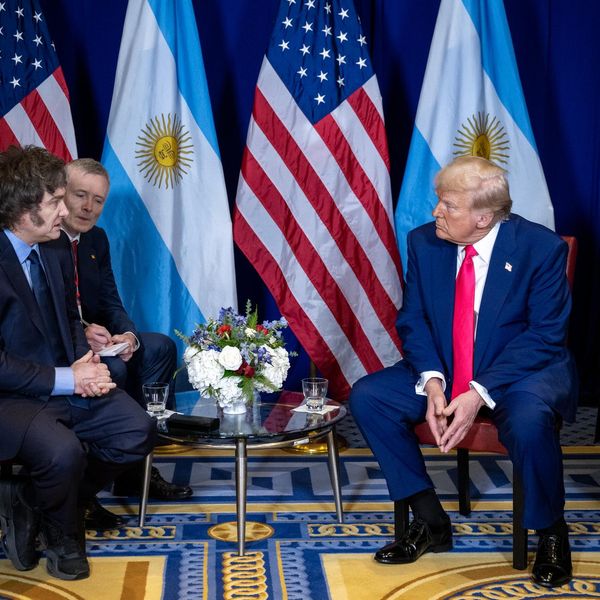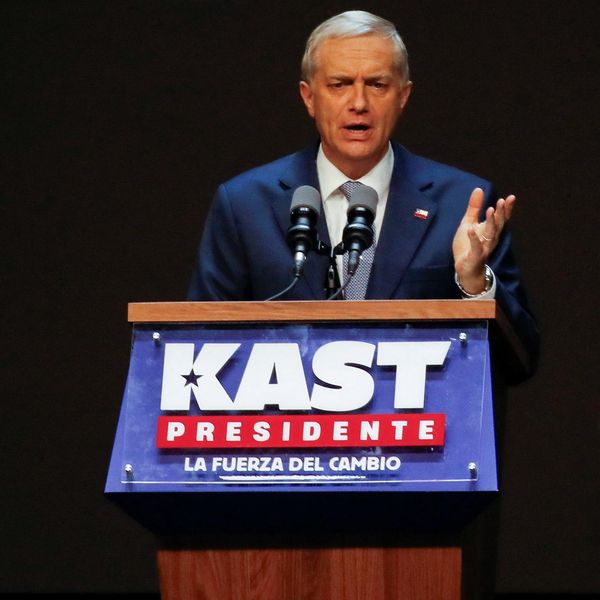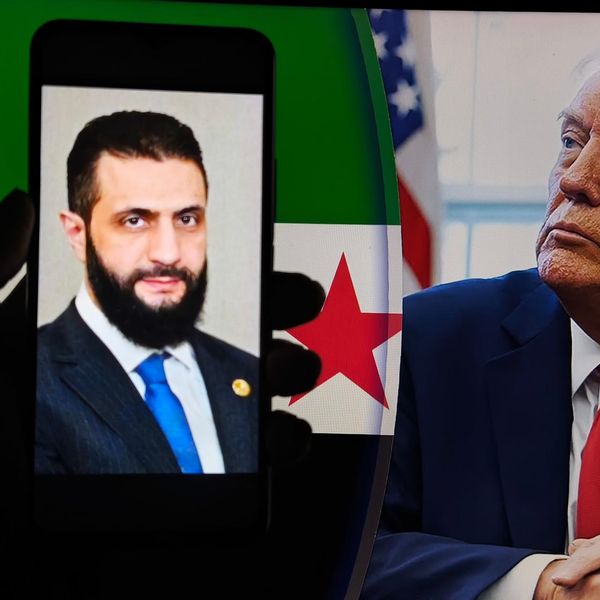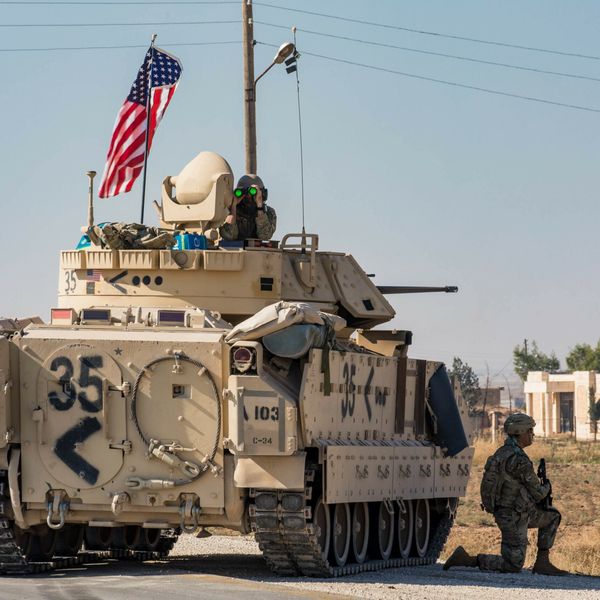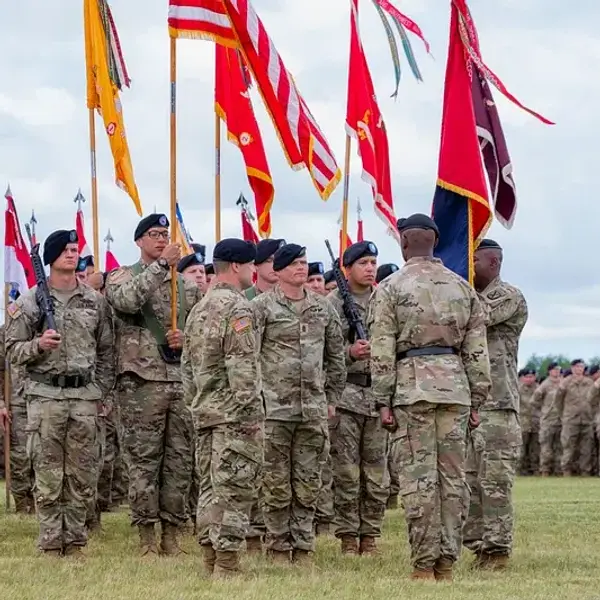In 2009, when Israel was bombing Gaza, one of the most prominent advocates of the realist school of international relations, John Mearsheimer, wrote an article explaining that while the nominal goal of Israel’s “Operation Cast Lead” was to counteract Hamas rocket attacks, the underlying purpose was “to get the Palestinians in Gaza to accept their fate as hapless subjects of a Greater Israel.”
He predicted it would fail in this purpose and that armed conflict would persist until the underlying issue of the status of the Palestinian territories was resolved. Sadly, this analysis proved to be as prescient as his more famous warning about mounting tensions between Russia and the West over Ukraine.
In both Eastern Europe and the Middle East, we can see the bitter fruits of policymakers ignoring these warnings. The United States is pumping arms and money into local wars that both threaten to spiral into far larger conflicts. In both cases, the stated war aims of our local proxies are unlikely to be achieved any time soon — if at all. And in each case, veteran advocates of a more restrained U.S. foreign policy have advocated a long-term ceasefire and moves toward diplomatic resolution of the underlying conflict.
University College London professor of international relations Philip Cunliffe, however, has argued that the Left’s foreign policy restrainers are being inconsistent. He thinks we were being driven by “sober realism” on Ukraine but have now “lost it” and let ourselves be swayed by humanitarian emotions about the Palestinians.
This critique doesn’t survive a closer look. It misunderstands the relationship between realist critiques of the aims of war and moral horror at the consequences of war. And it ignores everything the two cases have in common.
A Tale of Two Wars
Neither the terrorist attack on October 7 nor Russia’s invasion of Ukraine were morally justified. They were, however, both predictable and widely predicted. Cautious voices at the heights of the Western foreign policy establishment had been saying that encouraging Ukraine’s long-term ambitions to join NATO could inflame tensions with Russia since the end of the Cold War. And there were numerous similar warnings that Netanyahu’s strategy of simultaneously digging his boot deeper into the necks of the Palestinians and trying to make a separate peace with surrounding Arab states, thus depriving the Palestinians of the one thing they had going for them — the support, however ambiguous and inconsistent, of those states — was a recipe for exactly this kind of explosion.
In both cases, failure to see the warning signs has been compounded by subsequent U.S. policy. While this policy may finally be changing in Ukraine, the Biden administration’s default approach to both conflicts has been to write blank checks. In both cases, there have been signs of regret and hesitation along the way — weapons systems that aren’t sent to Ukraine for a few months out of concerns that they’re too escalatory (and then get sent anyway) or Biden begging Netanyahu for “humanitarian pauses” even as 1.7 million of the more than 2 million residents of Gaza had already been displaced and thousands of children lay dead.
Both Zelensky and Netanyahu have pushed back hard against such squeamishness and both men have, more often than not, gotten their way — even though, in both cases, it seems quite unlikely that our allies’ stated goals will be achieved on the battlefield.
Ukraine retaking both Crimea and every last inch of the Donbas seems supremely unlikely even given another five or 10 years of more war. Similarly, counterinsurgency campaigns with the goal of “eradicating” some terrorist or guerilla force are a dime a dozen around the world. It’s far less common for such campaigns to lead to the actual extinction of the targeted force. As Israeli propaganda itself emphasizes, the top leadership of Hamas is not in Gaza but Qatar. Moreover, after seven weeks of “total war” that Israeli officials themselves are eager to compare to atrocities like the Allied bombing of Dresden, it’s not yet clear how much the Gaza-based operations of Hamas have been hampered.
Meanwhile, as even Elon Musk has realized, displacing millions of Palestinians from their homes and killing and maiming vast numbers of innocents is a recipe for supercharging future recruitment to Hamas or even more radical organizations. As is so often the case around the world, trying to solve long-term geopolitical problems by dropping bombs creates many corpses and few solutions.
In both cases, the most likely consequence of a less belligerent course of action would be some sort of territorial compromise that falls considerably short of perfect justice. I’ve argued elsewhere that liberal democratic principles which in other contexts would be accepted by most Westerners across the political spectrum would entail simply offering West Bank and Gaza Palestinians citizenship in the single state that has de facto existed between the Jordan River and the Mediterranean Sea for the last 56 years. But I’m not deluded about that happening in the short term — and even if a “two-state solution” involved Israel’s full retreat to its pre-1967 borders, that would mean the State of Palestine would be created in 22% of the shared homeland.
Similarly, as hawks have long fretted, any sort of negotiated peace in Ukraine will mean Russia retaining some of the land it illegally seized in the course of a bloody war that it started. These are bitter pills to swallow.
Nevertheless, you’ll find realist scholars and commentators advocating peace in both contexts — and for the same reasons. In both cases, pointlessly prolonging the wars would lead to enormous and avoidable suffering for civilian populations. In both cases, the families of the soldiers whose lives would be sacrificed by pointless extension of the wars can be spared. And in both cases, moves toward diplomatic resolution can head off the terrifying possibility of these wars spiraling into larger regional or even global conflicts.
Cunliffe’s Critique
Cunliffe accuses advocates of peace in both conflicts of selectively choosing not to share graphic images of the Ukrainian victims of the Russian invasion while over-sharing images of Palestinian death and destruction. Providing hyperlinks of articles by me and Branko Marcetic, he says the “strangest saddest cases” on the anti-war Left are those of us “who for long years managed to preserve their intellectual poise and political integrity in the face of monolithic mass conformity, elite hostility, and relentless gaslighting by the mainstream media, only to eventually crumble and succumb to supporting the ‘latest thing.’”
This is a misunderstanding on several levels. For one thing, I know of no case of a left-wing critic of both wars whose position on Israel/Palestine wasn’t the same two years ago. Second, the idea that “mass conformity, elite hostility, and relentless gaslighting by mainstream media” flow in the direction of advocacy for the Palestinians feels like news from an alternate dimension.
While I’ve never particularly enjoyed being called a “Putin apologist” for advocating de-escalation and peace negotiations in Ukraine, that sort of rhetorical ugliness doesn’t even begin to touch the tidal wave of firings, deplatformings, denunciations from politicians of both parties, and mass public shaming that’s come down on advocates of peace in Israel/Palestine since October 7. (There have also been some incidents of free speech crackdowns the other way, as institutions try to prove their “even-handedness,” but no one really denies that it’s been lopsided.) Nothing remotely equivalent has happened to advocates of a negotiated solution in Eastern Europe. There are no trucks driving around university campuses displaying the names of “anti-Ukraine” students and professors. There are no laws against boycotting Ukraine on the books in any state.
Finally and most importantly, Cunliffe misunderstands the relationship between humanitarian concern about the carnage of war and realism about what can be achieved by war. Outrage about one side’s crimes can be — and often is — used to whip up support for wars that will only make everything worse. So, for example, Russian crimes in Ukraine are often showcased for the purpose of bolstering support for prolonging a war whose continuation won’t move the eventual ceasefire line very far, but will result in decades of Ukrainian children being blown up by unexploded cluster bombs.
Furthermore, the grisly atrocities committed by Hamas on October 7 are being used to justify mass death and displacement in Gaza, which will do nothing to reduce the threat of future terrorism. But the objection to such deceptive military solutions to long-term geopolitical problems isn’t just that they won’t work.
Anti-war protestors levitating the Pentagon through the power of meditation won’t work either — but if someone wants to dedicate an afternoon to giving it a shot, that’s fine with me. The problem with these awful and pointless wars is that they won’t achieve their stated objectives but they will result in vast numbers of dead, maimed, and psychologically broken human beings.
Cunliffe isn’t wrong that restrainers feel moral horror about this in the case of Gaza. He’s wrong to think we don’t feel it in the case of Ukraine — or that advocacy of restraint in both cases isn’t a consistent position.

